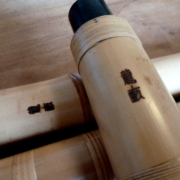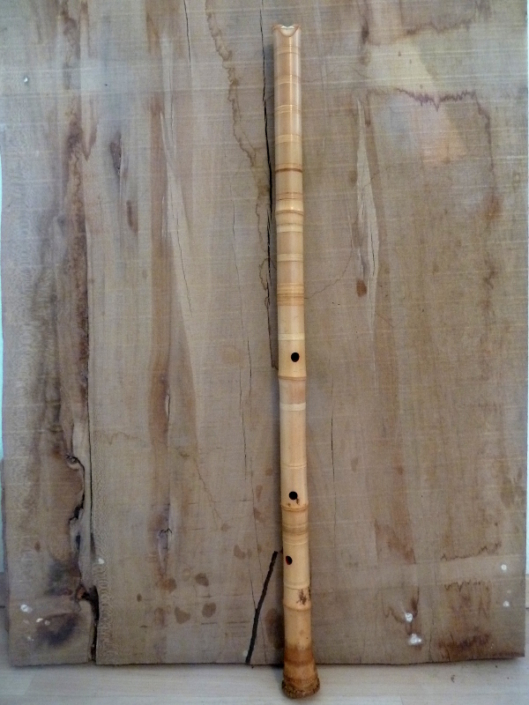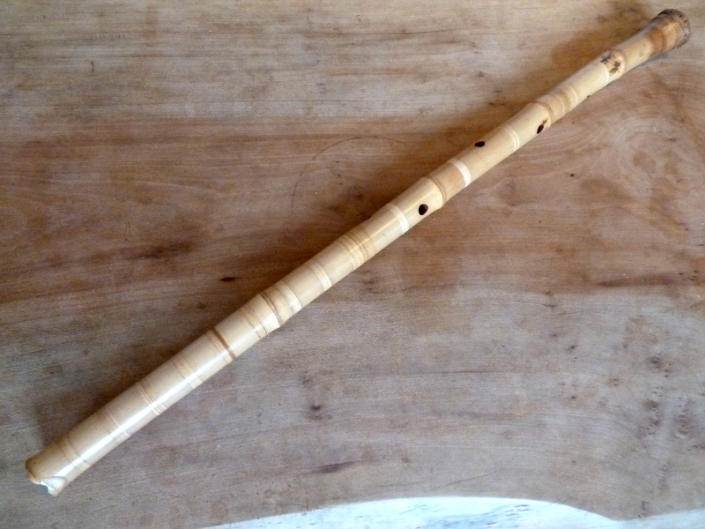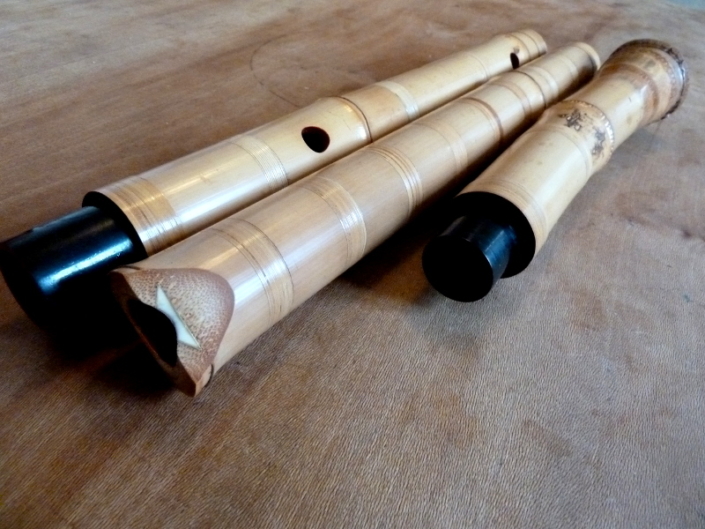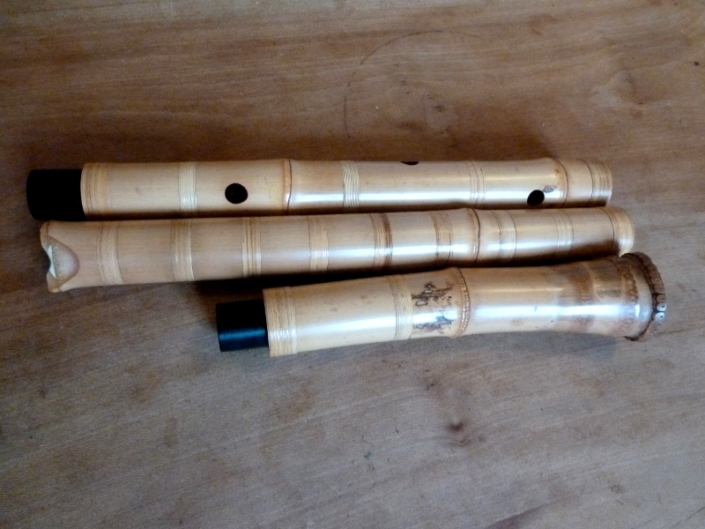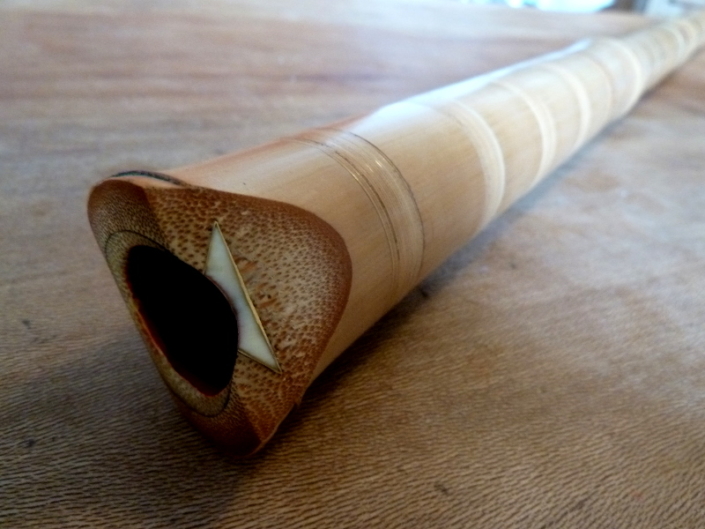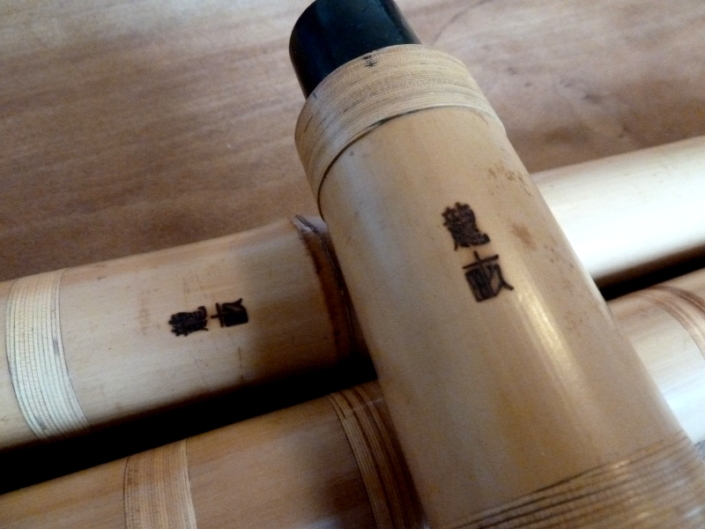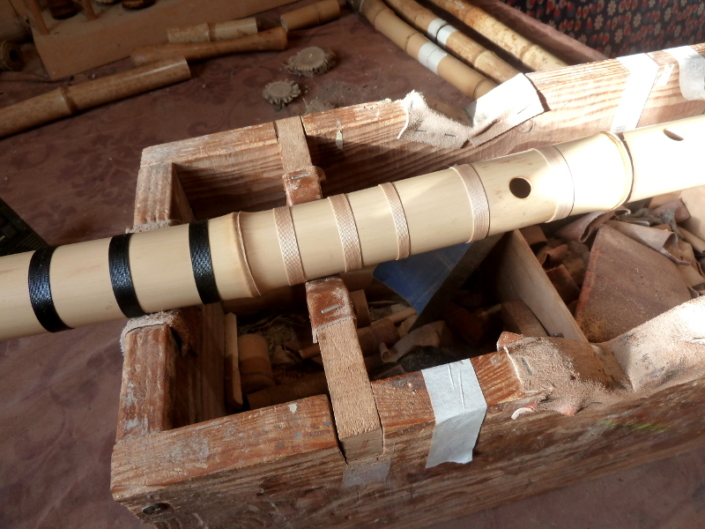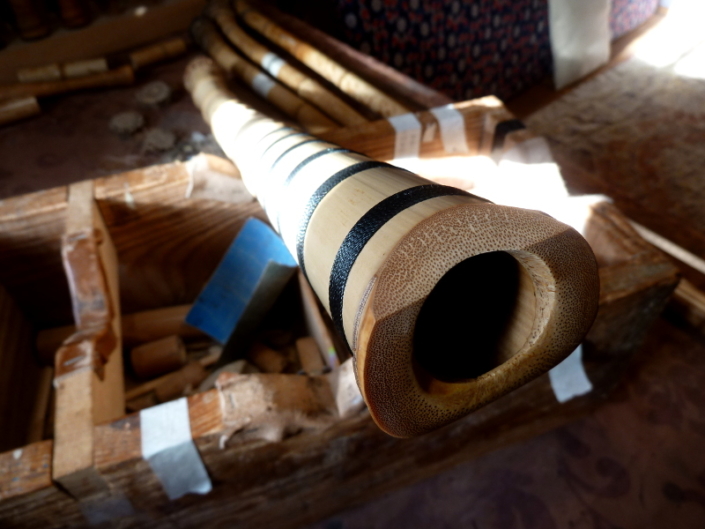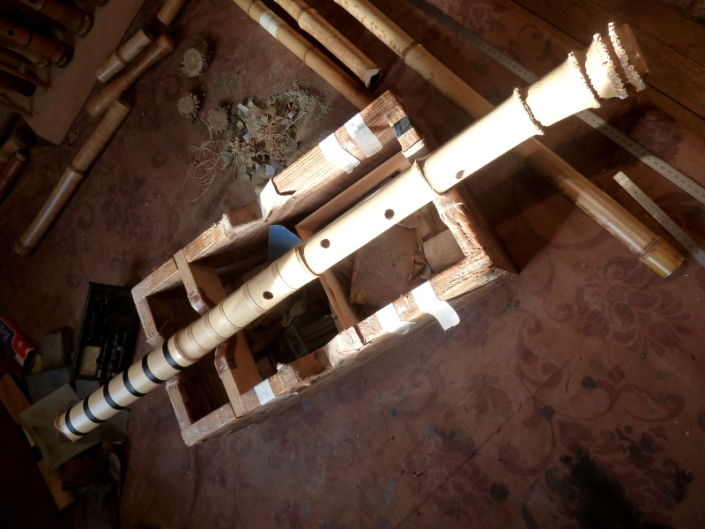I have been entrusted a master shakuhachi to repair :
a 3.0 ji-ari in 3 parts made by the famous Miura Ryuho.
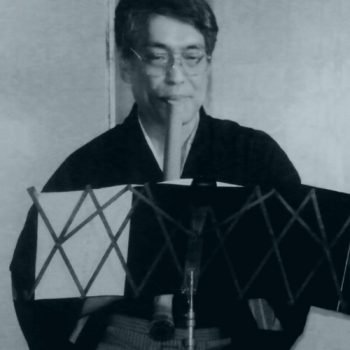
Miura Ryuho is one of the most renown modern makers in Japan; he makes instruments for many of the greatest professional players. Born in 1952, he studied with both Yokoyama Ranpo (father) and Katsuya (son) and was assistant maker of Yokoyama Katsuya. He is famous for being one of the rare makers to be able to build very long ji-ari with an accurate bore design.
Takahashi Toyomi with whom I studied in 2019 in Tokyo is one of his students.
This shakuhachi is a piece of art !
Regarding the crafting, it is precise, aesthetic and perfectly mastered. This shakuhachi is dividing in 3 parts and utaguchi is made from mammoth ivory and gold. the rattan of the 2 joints is incredibly fine.
I am usually not fond of very long shakuhachi (cho-kan) and not very good at playing them.
But this one (about 1 meter !) is an exception.
The finger holes are placed very ergonomically giving a (relative) comfortable fingering especially the 5th hole for the thumb which is moved on the left avoiding excessive tension in the wrist.
As for the blowing, it is so surprising to feel the whole bamboo vibrating loudly with just a light stream of air…
The tone colour is rich, and tuning and balance perfect up to dai-kan.
So I tried, modestly and toughly, to play a Honkyoku with this great instrument : Hifumi Hachigaeshi no Shirabe.
Actually, I did meet this shakuhachi before in Lisbon ESS summerschool in 2019 and here it is in my workshop 2 years later !
The repair was only on one of the joints that got loose.
Thanks Klaus for entrusting this great shakuhachi to me !
The funny thing is that at the same time, Nicolas sent me another kind of long flute to repair :
A huge 3.0 Taimu from the regretted Ken Lacosse – Mujitsu (one of his last shakuhachi made). It’s a beast made in an incredibly thick wide bore piece of madake; typically the kind of flute I am unable to play !
Here it is on the workbench :
To get an idea of how it sounds, have a look at Cornelius Boots videos.
It is rare that I have so long shakuhachi with me at the workshop; and having two at the same time with so different approaches of shakuhachi making was a luck and, as always, an opportunity to learn a lot for me.

